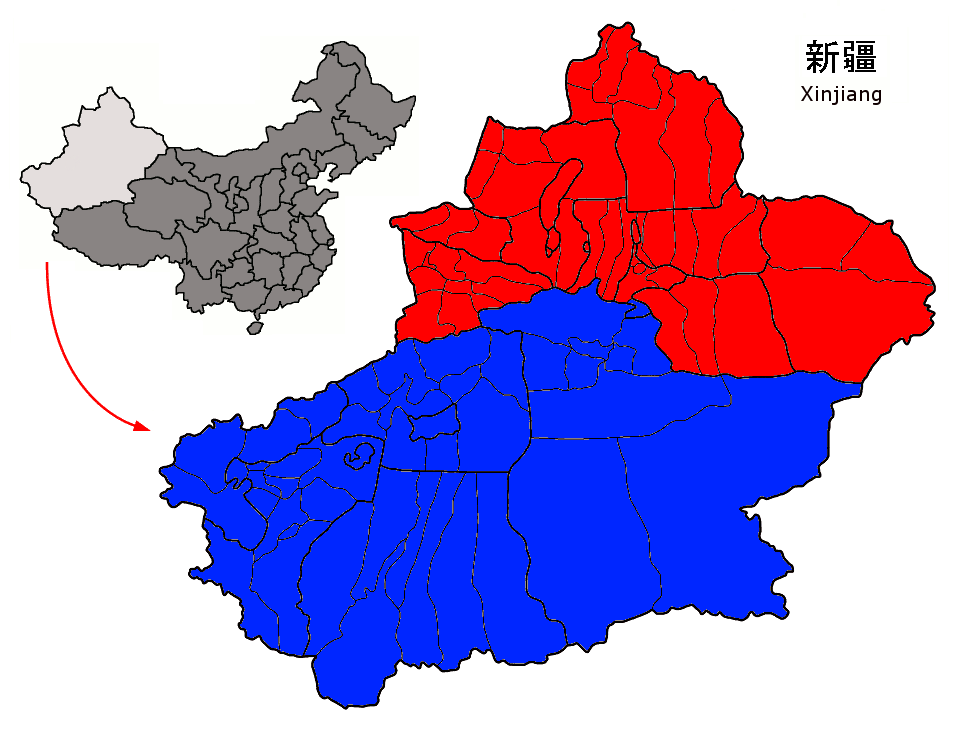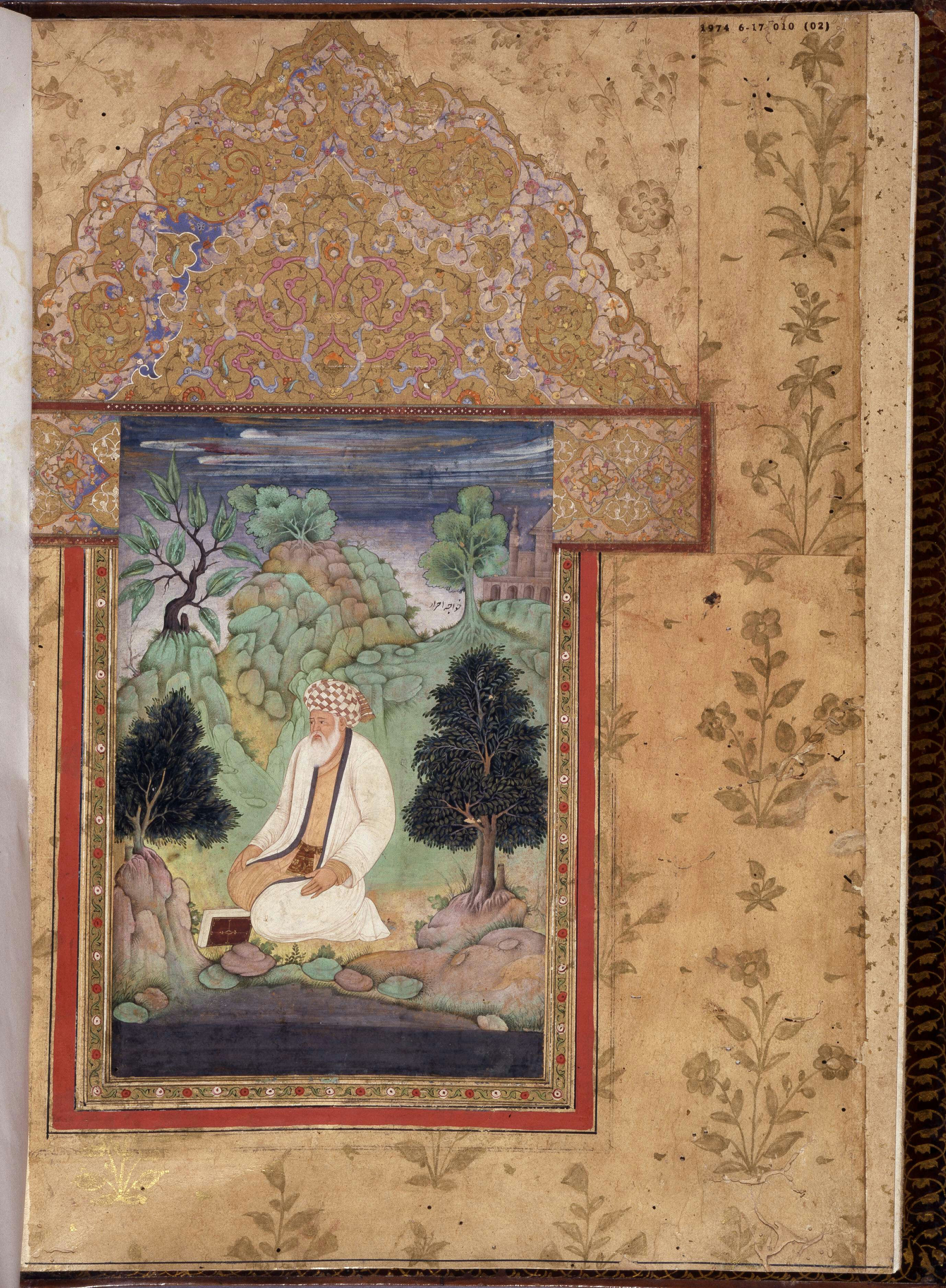|
Dzungar Conquest Of Altishahr
The Dzungar conquest of Altishahr resulted in the Tibetan Buddhist Dzungar Khanate in Dzungaria conquering and subjugating the Genghisid-ruled Yarkent Khanate in Altishahr (the Tarim Basin in southern Xinjiang). It put a final end to the independence of the Chagatai Khanate. Conquest The Turkic Muslim sedentary people of the Tarim Basin were originally ruled by the Chagatai Khanate (or its offshoot the Yarkent Khanate) while the nomadic Oirat Dzungar Buddhists in Dzungaria ruled over the Dzungar Khanate. The Dzungar Oirats led by Sengge attacked the Chagatai Khanate during the reign of Abdullah Khan. The Naqshbandi Sufi Khojas, descendants of the Prophet Muhammad, had replaced the Chagatayid Khans as the ruling authority of the Tarim Basin in the early 17th century. There was a struggle between two factions of Khojas, the Afaqi (White Mountain) faction and the Ishaqi (Black Mountain) faction. The Ishaqi defeated the Afaqi, which resulted in the Afaqi Khoja inviting the 5th ... [...More Info...] [...Related Items...] OR: [Wikipedia] [Google] [Baidu] [Amazon] |
Tarim Basin
The Tarim Basin is an endorheic basin in Xinjiang, Northwestern China occupying an area of about and one of the largest basins in Northwest China.Chen, Yaning, et al. "Regional climate change and its effects on river runoff in the Tarim Basin, China." Hydrological Processes 20.10 (2006): 2207–2216.online 426 KB) Located in China's Xinjiang region, it is sometimes used synonymously to refer to the southern half of the province, that is, Southern Xinjiang or Nanjiang (), as opposed to the northern half of the province known as Dzungaria or Beijiang. Its northern boundary is the Tian Shan mountain range and its southern boundary is the Kunlun Mountains on the edge of the Tibetan Plateau. The Taklamakan Desert dominates much of the basin. The historical Uyghur name for the Tarim Basin is Altishahr (Uyghur language, Traditional Uyghur: , ), which means 'six cities' in Uyghur language, Uyghur. The region was also called ''Little Bukhara'' or ''Little Bukharia''. Geography and relation ... [...More Info...] [...Related Items...] OR: [Wikipedia] [Google] [Baidu] [Amazon] |
Khoja (Turkestan)
Khoja or Khwaja (; ; ; ; ; ; ), a Persian word literally meaning 'master' or ‘lord’, was used in Central Asia as a title of the descendants of the noted Central Asian Naqshbandi Sufi teacher, Ahmad Kasani (1461–1542) or others in the Naqshbandi intellectual lineage prior to Baha al-din Naqshband. The most powerful religious figure in the late Timurid era was the Naqshbandi Shaykh Khwaja Ahrar.The letters of Khwāja ʻUbayd Allāh Aḥrār and his associates. Translated by Jo-Ann Gross. Leiden: BRILL, 2002. The Khojas often were appointed as administrators by Mongol rulers in the Altishahr or present-day region of Tarim Basin in Xinjiang, China. The Khojas of Altishahr claimed to be Sayyids (descendants of Muhammad) and they are still regarded as such by the fraternity people of Altishahr. Although Ahmad Kasani himself, known as ''Makhdūm-i-Azam'' or "Great Master" to his followers, never visited Altishahr (today's Tarim Basin), many of his descendants, known as ''Ma ... [...More Info...] [...Related Items...] OR: [Wikipedia] [Google] [Baidu] [Amazon] |
Zunghar Khanate At 1750
The Dzungar people (also written as Zunghar or Junggar; from the Mongolian language, Mongolian words , meaning 'left hand') are the many Mongol Oirats, Oirat tribes who formed and maintained the Dzungar Khanate in the 17th and 18th centuries. Historically, they were one of the major tribes of the Four Oirat confederation. They were also known as the Eleuths or Ööled, from the Qing dynasty euphemism for the hated word "Dzungar", and as the "Kalmyks". In 2010, 15,520 people claimed "Ööled" ancestry in Mongolia. An unknown number also live in China, Russia and Kazakhstan. Origin The Dzungars were a confederation of several Oirats, Oirat tribes that emerged in the early 17th century to fight the Altan Khan of the Khalkha (not to be confused with the better-known Altan Khan, Altan Khan of the Tümed), Tümen Zasagt Khan, and later the Manchu people, Manchu for dominion and control over the Mongolian people and territories. This confederation rose to power in what became known as ... [...More Info...] [...Related Items...] OR: [Wikipedia] [Google] [Baidu] [Amazon] |
Battle Of Jao Modo
The Battle of Jao Modo (; ) also known as the Battle of Zuunmod (literally "Battle of the Hundred Trees"), was fought on June 12, 1696, on the banks of the upper Terelj river east of the modern-day Mongolian capital Ulaanbaatar. A Dzungar-Mongol army under the command of Galdan Boshugtu Khan was defeated by Qing armies personally led by the Kangxi Emperor. This decisive Qing victory in the early stages of the Dzungar–Qing Wars (1687–1758) effectively incorporated Khalkha Mongolia under Qing rule and relegated Dzungar Mongol forces to Inner Asia until they were finally defeated in 1758. Background Attempts by the Qing court to maintain an uneasy peace between the eastern Khalkha and western Dzungar-Oirat Mongols ultimately collapsed when in 1687 forces loyal to the Khalkha Tüsheet Khan killed the brother of the Dzungar Mongol leader Galdan Boshugtu Khan in battle as he attempted to support the rival Zasaghtu Khalkha tribe. In defiance of orders from the Kangxi Empe ... [...More Info...] [...Related Items...] OR: [Wikipedia] [Google] [Baidu] [Amazon] |
Jizyah
Jizya (), or jizyah, is a type of taxation levied on non-Muslim subjects of a state governed by Islamic law. The Quran and hadiths mention jizya without specifying its rate or amount,Sabet, Amr (2006), ''The American Journal of Islamic Social Sciences'' 24:4, Oxford; pp. 99–100. and the application of jizya varied in the course of Islamic history. However, scholars largely agree that early Muslim rulers adapted some of the existing systems of taxation and modified them according to Islamic religious law.online Historically, the jizya tax has been understood in Islam as a fee for protection provided by the Muslim ruler to non-Muslims, for the exemption from military service for non-Muslims, for the permission to practice a non-Muslim faith with some communal autonomy in a Muslim state, and as material proof of the non-Muslims' allegiance to the Muslim state and its laws. The majority of Muslim jurists required adult, free, sane males among the dhimma community to pay the jizy ... [...More Info...] [...Related Items...] OR: [Wikipedia] [Google] [Baidu] [Amazon] |
Tsewang Rabtan
Tsewang Rabtan (from ''Tsewang Rapten''; ; Mongolian: ; 1643–1727) was a Choros prince and the Khong Tayiji of the Dzungar Khanate from 1697 (following the death of his uncle and rival Galdan Boshugtu Khan) until his death in 1727. He was married to Lha-bzang Khan's sister. Political and military action Tsewang Rabtan married his daughter, Boitalak (), to Danjung (), the eldest son of Lha-bzang Khan in 1714. He used the occasion to destroy some of Lha-bzang's troops in preparation for an invasion of Tibet. He consolidated Dzungar power by 1715, and in 1717 sent one army of 300 into Amdo to retrieve the 7th Dalai Lama, planning to consolidate Tibetan support by bringing him to Lhasa, and another army of 6000, led by his brother Tseren Dondub, that successfully took Lhasa from the Khoshut and killed Lha-bzang Khan. However, the first army failed to acquire the Dalai Lama, having been defeated by Qing troops at Kumbum. Dzungar troops went on the rampage through Lhas ... [...More Info...] [...Related Items...] OR: [Wikipedia] [Google] [Baidu] [Amazon] |
Galdan Tseren
Galdan Tseren (; ; 1693–1745) was a Choros prince and the '' Khong Tayiji'' of the Dzungar Khanate from 1727 until his death in 1745. Galdan Tseren was the eldest son of Tsewang Rabtan. After the assassination of his father by rival factions, a civil war followed between his sons of which Galdan Tseren emerged victorious and crowned himself the new Dzungar Khan. Galdan Tseren continued his fathers policies of confrontation with the Qing dynasty. He refused to surrender Lubsan Danjin, the leader of the revolt of the Kokonor (Qinghai) Khoshuts of 1723, and he initiated a policy of harassment of the Khalkha Mongols, the Manchu's allies. In the spring of 1729, war broke out against the Qing dynasty and Galdan Tseren's forces obtained numerous victories against the Qing. The war dragged on until 1737. Peace negotiations had already started in 1734. In 1737 both sides finally made peace and the Galdan Tseren accepted the condition of tributary. Galdan Tseren not only viewed war ... [...More Info...] [...Related Items...] OR: [Wikipedia] [Google] [Baidu] [Amazon] |
Akbash Khan
Akbash Khan ( Chagatai: اقباش خان literally ''White Head Khan''), born Muhammad Mumin ( Chagatai and Persian: محمد مؤمن) of the Yarkent Khanate was a Central Asian Khan in the beginning of 18th century. He was the last Khan of Yarkent Khanate. He is known as one of the "later Chagatai princes" (察合台後王) in China. Origin Akbash Khan's name was Muhammad Mumin. He descended from the second son of Genghis Khan, Chagatai. He was a member of the Borjigin clan by blood. His father was Said Baba Khan of Eastern Khanate (Uyghurstan) and his grandfather was Ismail Khan. He had two brothers who were also at one point Khans of Yarkent Khanate (Abd ar-Rashid Khan II and Muhammad Imin Khan respectively). Reign In 1678, Galdan Boshugtu Khan of Dzungar invaded Yarkent Khanate on the invitation of Afak Khoja, who previously was exiled from the country by Ismail Khan, conquered eastern part of Yarkent Khanate, captured Ismail Khan in Yarkand and set up Abd ar-Rashid K ... [...More Info...] [...Related Items...] OR: [Wikipedia] [Google] [Baidu] [Amazon] |




